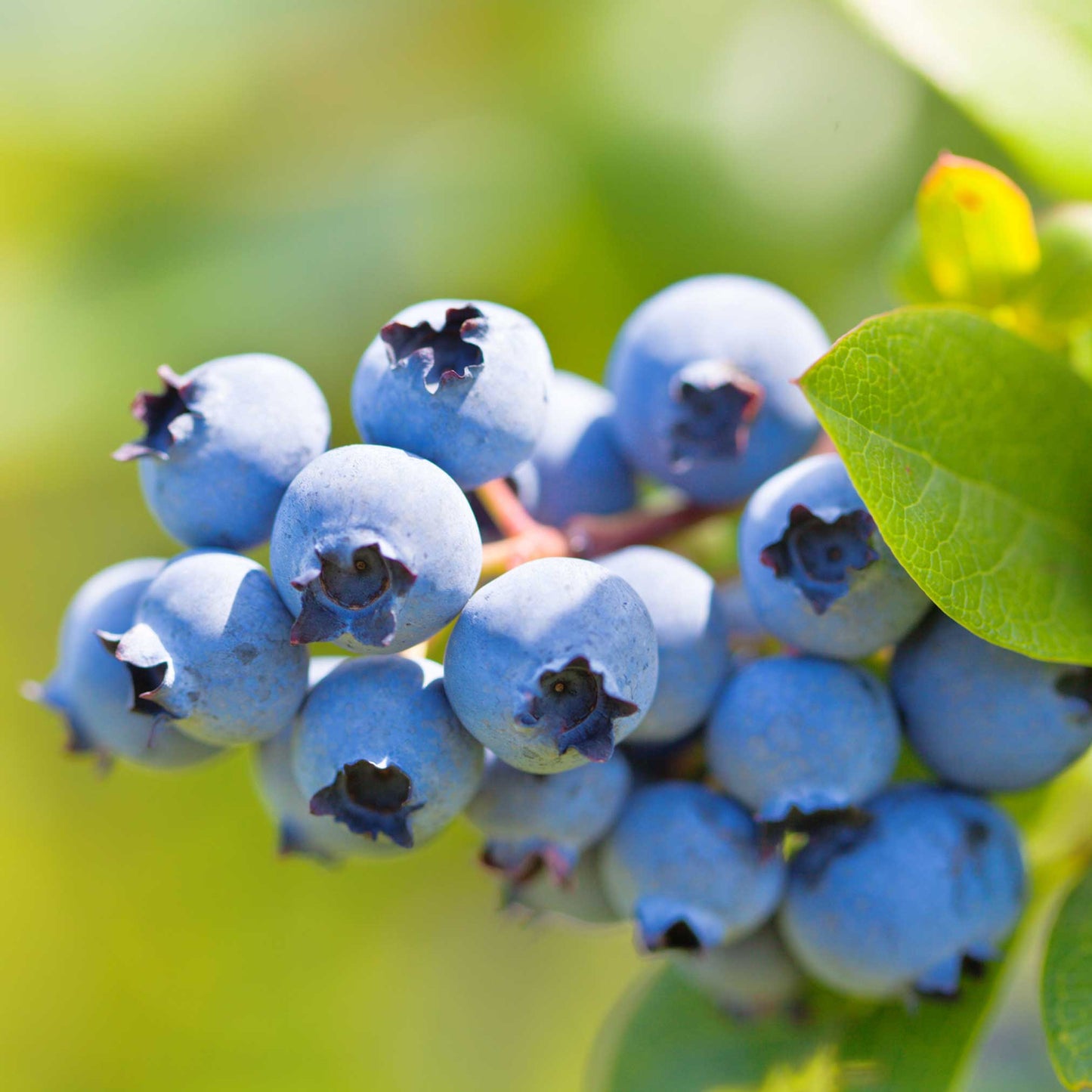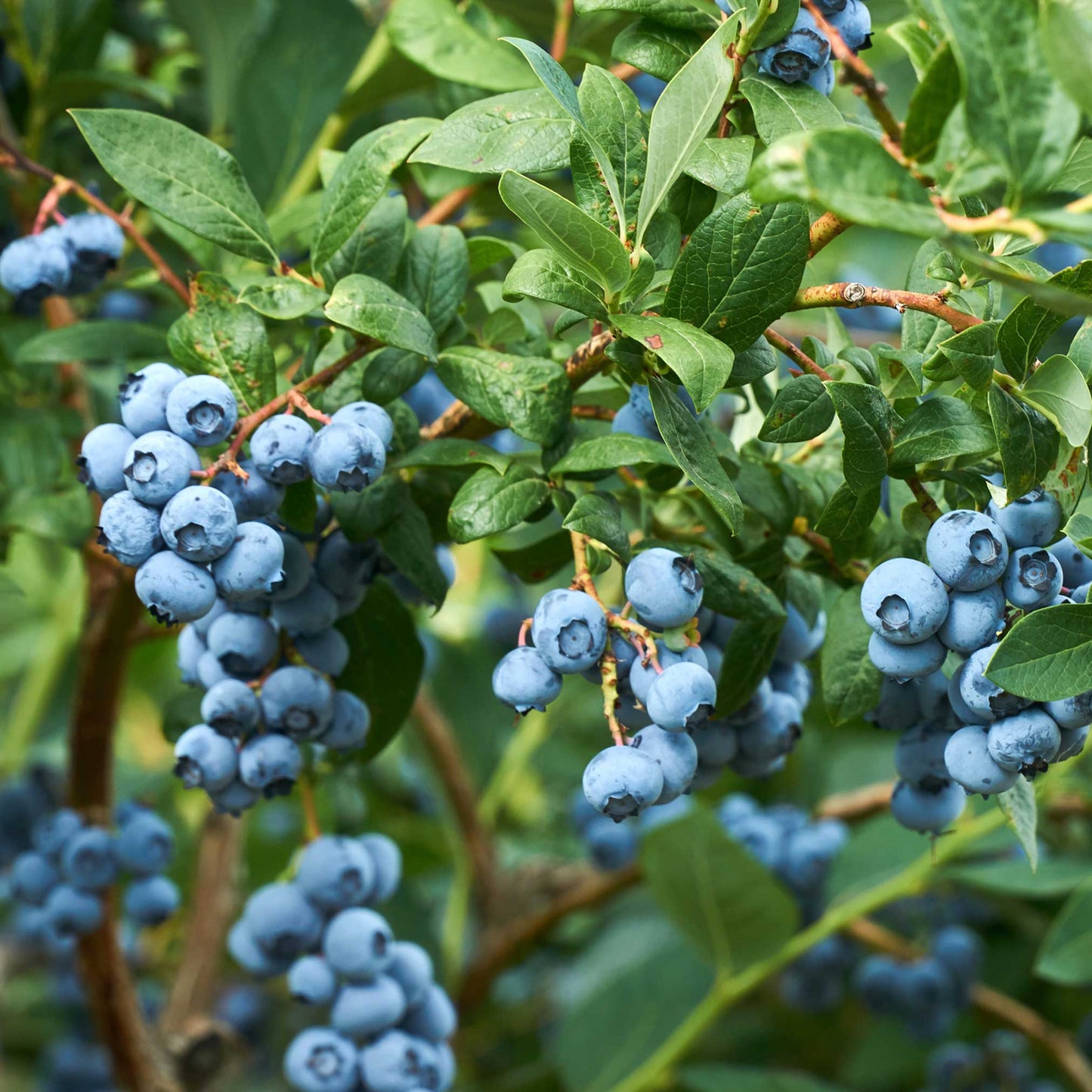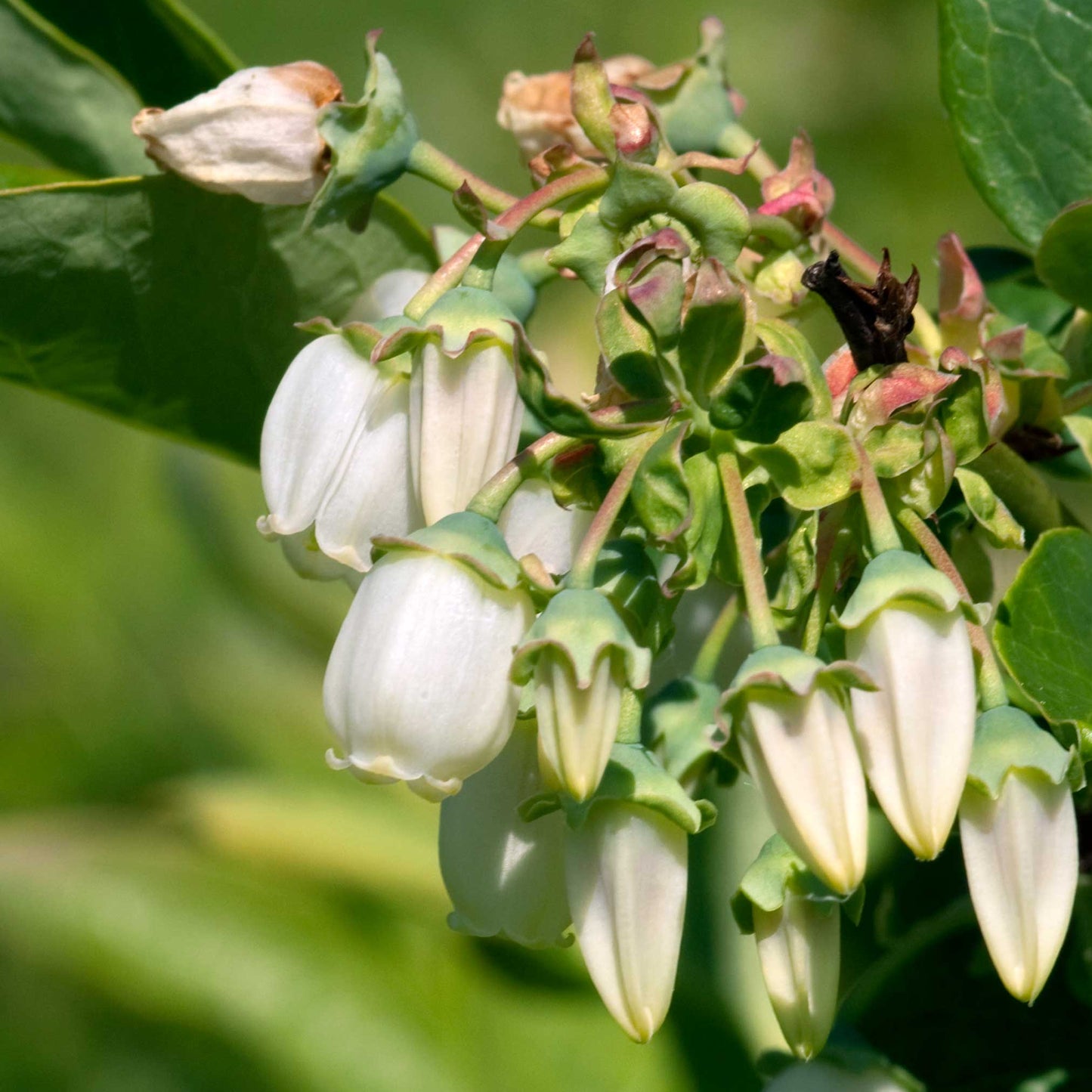Duke Blueberry
Duke Blueberry
SKU:EDB-BLU-DUK-23-3G
Meet the Duke of the Garden: The Duke Blueberry Bush
Looking for a berry-licious addition to your garden? Say hello to the Duke Blueberry, a robust bush that's as noble in growth as it is in flavor. This hardy plant is a favorite among green thumbs and berry lovers alike, and here's why:
- Early Bird Special: The Duke is an early riser in the berry world, offering one of the first harvests of the season. Get ready to enjoy these juicy gems when the summer sun starts to smile.
- Chill, but Hardy: It's cool under pressure, literally. The Duke Blueberry is cold-hardy, making it a resilient choice for gardeners in cooler climates.
- High Yield, High Five: Celebrate bountiful harvests year after year. This bush doesn't just grow, it thrives, producing generous clusters of berries that are perfect for pies, jams, or a fresh snack.
- Stunning Foliage: It's not just about the berries! The Duke boasts lovely green foliage that turns a stunning crimson in the fall, making it a four-season showstopper.
Plant your Duke Blueberry bush today and get ready for a garden that's royally awesome. With its combination of flavor, resilience, and beauty, it's a plant that truly rules.






Product Details
-
Product Category
Edibles
-
Product Subcategory:
Berries
-
Botanical Name:
Vaccinium corymbosum
-
Does Not Ship To:
AZ, CA, OR, WA
-
Mature Height:
5-6 ft.
-
Mature Width:
3-4 ft.
-
Growing Zone:
4-7 outdoors
-
Indoor Growing:
-
Sunlight:
Full Sun
-
Growth Rate:
Moderate
-
Harvest Time:
June - August
-
Bloom Time:
Spring

Planting Directions
<h2>Planting Duke Blueberry Bushes</h2>
<p>To plant Duke Blueberry bushes, choose a location with full sun and well-draining, acidic soil with a pH of 4.5 to 5.5. Prepare the soil by incorporating organic matter like peat moss or compost.</p>
<ul>
<li>Space bushes 4-6 feet apart to allow for mature growth.</li>
<li>Dig a hole twice as wide and the same depth as the root ball.</li>
<li>Place the bush in the hole, spreading out the roots.</li>
<li>Backfill with soil, and water thoroughly.</li>
<li>Apply a mulch layer of pine needles or sawdust to conserve moisture and suppress weeds.</li>
</ul>
<h2>Care and Maintenance</h2>
<p>Water the bushes regularly, especially during dry spells. Fertilize in early spring with an acid-forming fertilizer designed for blueberries. Prune annually during winter to remove dead or weak branches and to encourage strong growth.</p>
<h2>Fertilization</h2>
<p>Apply a balanced, slow-release fertilizer formulated for acid-loving plants in early spring. Follow the manufacturer's instructions for application rates.</p>
<h2>Pollination</h2>
<p>Duke Blueberries are self-pollinating, but planting another variety nearby can improve yield. Ensure bees and other pollinators have access to the flowers.</p>
<h2>Harvesting</h2>
<p>Harvest Duke Blueberries when they are fully ripe and have a uniform blue color. Gently twist the berries off the bush. They should come off easily when ready.</p>
<p>Remember, blueberry bushes can take a few years to establish before they produce significant fruit. Patience and consistent care will lead to bountiful harvests.</p>

FAQs
<h2>FAQs for the Duke Blueberry Plants</h2>
<h3>1. How do I plant Duke Blueberry plants?</h3>
<ol>
<li><strong>Choose the right location:</strong> Select a spot with full sun and well-drained, acidic soil (pH 4.5 to 5.5). If your soil isn't naturally acidic, you can amend it with sulfur or peat moss.</li>
<li><strong>Prepare the soil:</strong> Loosen the soil to a depth of 12-18 inches and mix in an organic matter like compost or aged manure to improve soil structure and fertility.</li>
<li><strong>Planting:</strong> Dig a hole twice as wide and the same depth as the root ball. Remove the plant from its container, gently tease the roots, and place it in the hole, ensuring the root crown is level with the soil surface. Backfill with soil, pressing down firmly to remove air pockets.</li>
<li><strong>Watering:</strong> Water thoroughly after planting. Maintain consistent moisture, especially during the first growing season.</li>
<li><strong>Mulching:</strong> Apply a 2-4 inch layer of organic mulch around the base of the plant to retain soil moisture, regulate soil temperature, and reduce weed competition.</li>
</ol>
<h3>2. How should I water my Duke Blueberry plants?</h3>
<p><strong>Watering is crucial,</strong> especially during the establishment period and in dry spells. Aim for 1-2 inches of water per week, either from rainfall or supplemental watering. Use a soaker hose or drip irrigation to deliver water directly to the root zone, minimizing water loss through evaporation and preventing foliage diseases.</p>
<h3>3. What is the best fertilization schedule for Duke Blueberry plants?</h3>
<ul>
<li><strong>Early Spring:</strong> Apply a balanced, slow-release fertilizer designed for acid-loving plants before new growth begins.</li>
<li><strong>After Bloom:</strong> Consider a second application of fertilizer after the plants have bloomed, to support fruit development.</li>
<li><strong>Avoid Late Season Fertilization:</strong> Do not fertilize late in the season, as this can stimulate new growth that won't harden off before winter.</li>
</ul>
<h3>4. How do I ensure good pollination for my Duke Blueberry plants?</h3>
<p><strong>To maximize fruit production,</strong> plant at least two different blueberry varieties close to each other to encourage cross-pollination. Duke blueberries bloom early in the season, so pairing them with another early or mid-season variety can enhance pollination. Bees are the primary pollinators, so avoid using pesticides during the blooming period to protect these beneficial insects.</p>
<h3>5. When and how should I harvest Duke Blueberries?</h3>
<ul>
<li><strong>Timing:</strong> Duke Blueberries typically ripen in early to mid-summer. Wait until berries are fully blue and easily come off the stem without tugging.</li>
<li><strong>Method:</strong> Gently roll the berries between your thumb and the palm of your hand, allowing them to fall into a container. Avoid pulling or twisting the berries to prevent damage to the plant.</li>
<li><strong>Storage:</strong> Freshly harvested blueberries can be stored in the refrigerator for up to a week. For longer storage, they can be washed, dried, and frozen on a baking sheet before transferring to a freezer bag.</li>
</ul>







